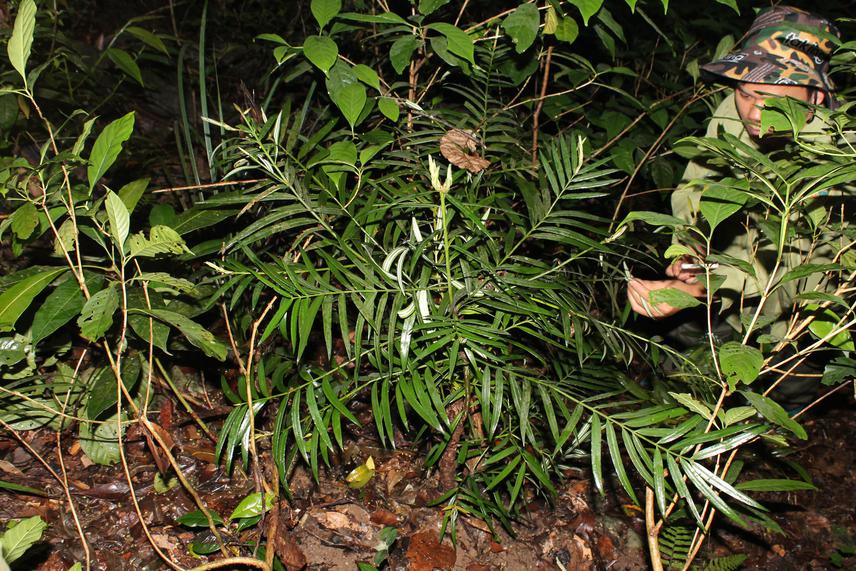Do Van Truong
The aims are to explore diversity of gymnosperm species; assess conservation status of recorded gymnosperm species; raise awareness of the staff and local people about biodiversity conservation; build up appropriate conservation model for threatened gymnosperm species; provide database for further studies.

Amentotaxus argotaenia.
Pu Luong Nature Reserve is located in north-western Thanh Hoa province, has been known as one of the biodiversity hotpots in northern Vietnam. There is one typically mixed ecosystem between limestone and land-mountain with high biodiversity recognized, particularly the flora. With regard to the flora, at least 1.570 vascular plant species were recorded for the flora where the primary forest on limestone and the upper slopes is characterized by very high plant species diversity including several globally and nationally threatened gymnosperm species. Actually this area is recognized as one of the diversity hotspot of gymnosperm species in Vietnam.
The recent reports mentioned 14 gymnosperm species occurring in Pu Luong Nature Reserve representing a diversity hotspot of conifer species in northern Vietnam, of which 6 species were listed in IUCN red list. The gymnosperm species are not only rare genetic resource to science, but are also dominant in the primary forest subtype on limestone peaks of Pu Luong Nature Reserve. Currently many gymnosperm species are facing to be risk due to unexpected actions such as over-exploitation and illegal logging as well as climate change and natural calamity. However conservation needs assessment for gymnosperm species have not been conducted for the site. Therefore, we would like to conduct this research to provide scientific evidence of conservation status of gymnosperm species for further scientific research and make conservation plan of threatened species; and to raise awareness among stakeholders before some gymnosperm species may disappear from this area.